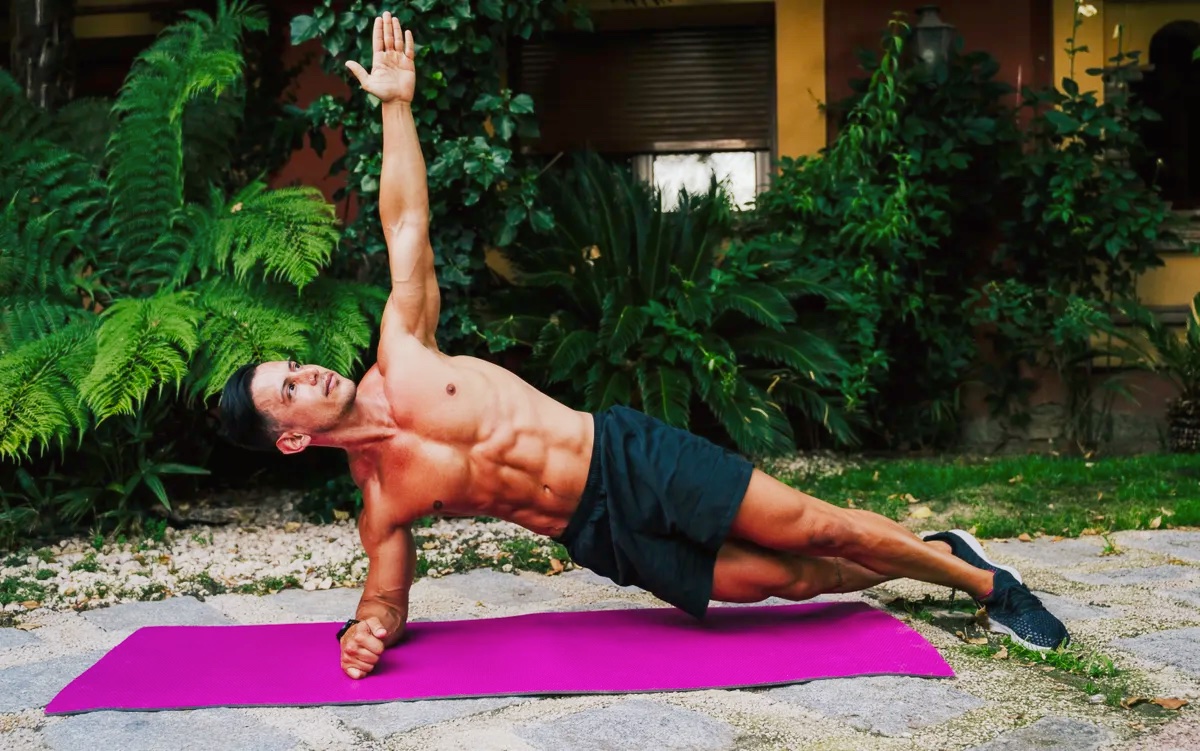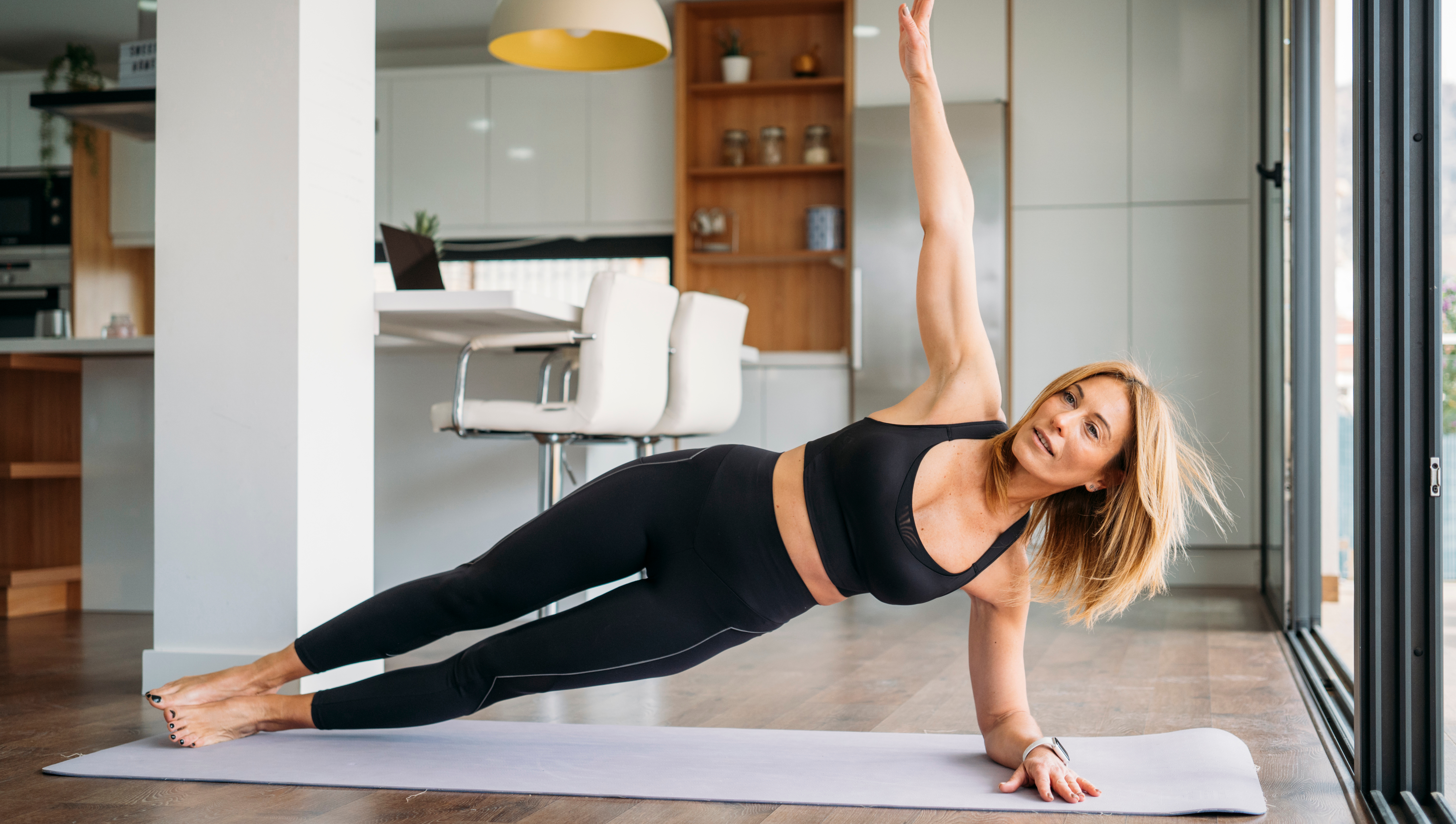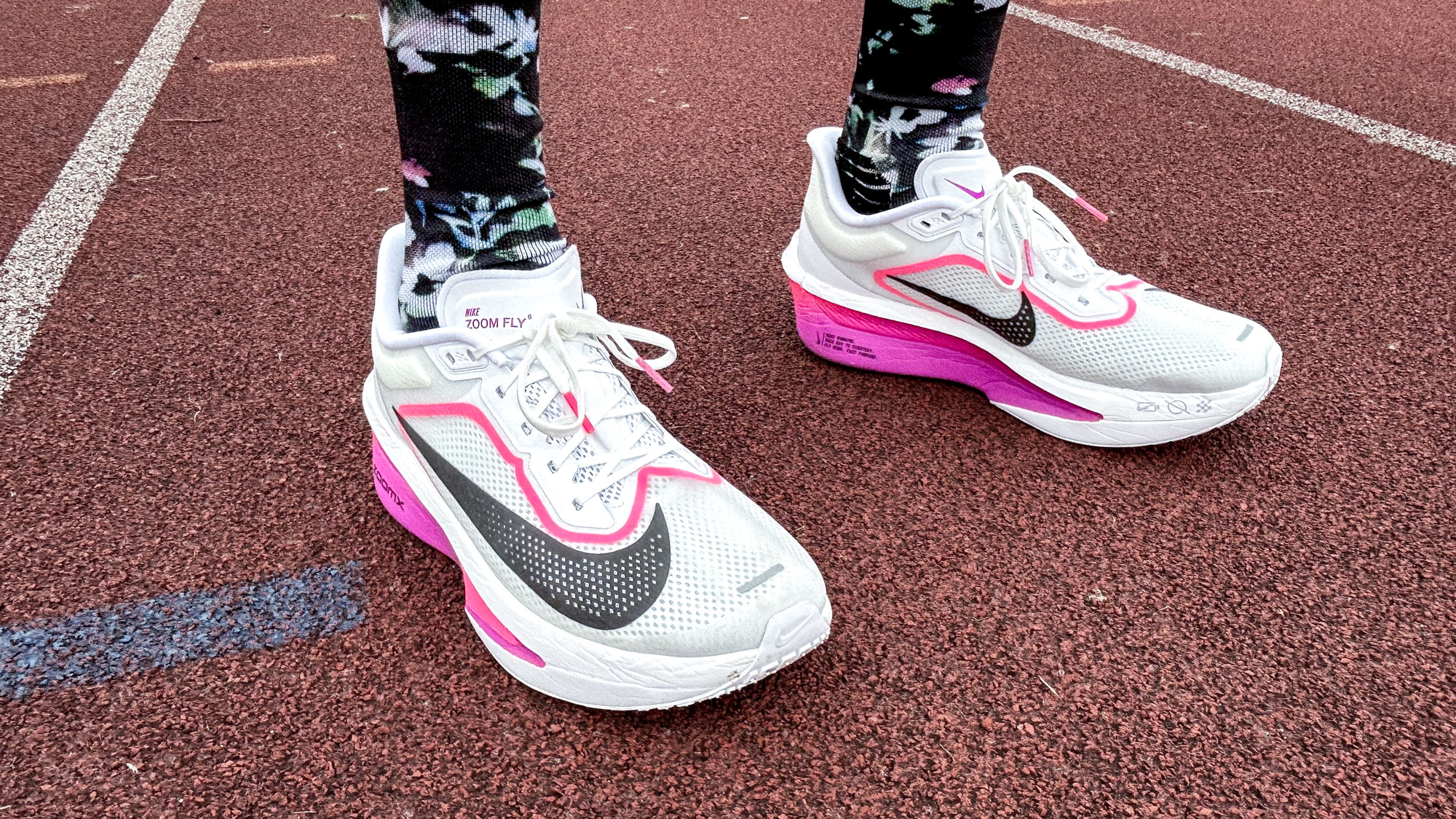I did rolling side planks every day for a week — here’s what happened to my abs
Here's what a week of side planks does to your core

There are plenty of ways to train your abs and the plank is perhaps one of the more obvious exercises we associate with building a stronger core. The standard plank can get a little boring and I don't doubt others will agree with me here. So I've experimented with many of the best plank variations in my workouts over the years and have recently been enjoying putting my abs to the test with the rolling side plank.
Rolling planks activate not only the rectus abdominis (your six-pack muscles) but also the deeper stabilizing muscles which can contribute to improved core strength and better posture. As with standard planks, rolling side planks require no equipment and minimal space so I set myself the challenge of performing them for one minute every day for a week. With any floor-based exercises, I like to roll out a mat to provide a more cushioned surface and I'd recommend you do this too if trying the rolling side planks. Go ahead and check out our guide to the best yoga mats if you don't already own one.
I wasn't fussed about setting myself a certain goal for how many rolling sidenplanks I could do in the set time, instead, I put my focus on maintaining strong form throughout. This way I hoped I would really feel the exercise deep in my core. If you want to find out if I really did feel it and how to do rolling side planks yourself, keep on reading.
How to do rolling planks

- Start in a plank position positioning your forearms at a right angle to your body rather than aligning them parallel.
- Ensure your body forms a straight line from head to heels, engaging your core muscles.
- Shift your weight onto your right elbow and rotate your body to the left.
- Lift your left arm toward the ceiling as you pivot on your right foot, coming into a side plank position.
- Your body should now be facing sideways, with your left arm extended upwards and your feet stacked on top of each other.
- Maintain the side plank position for a moment, keeping your body in a straight line. Ensure your shoulder is directly above your wrist, and your core is engaged.
- Slowly rotate your body back to the standard plank position by lowering your left arm and returning your hips to a neutral position.
- Repeat the same sequence, but this time shift your weight onto your left elbow, rotate to the right, and lift your right arm in the side plank position.
There were a couple of small tips that helped me master the correct form while practicing the rolling side plank. One tip that can help to control the movement better throughout, is to make sure you are properly engaging your core to prevent swaying or twisting. Secondly, keep a steady pace and maintain your breath throughout the exercise.
I did rolling side planks for 1 minute every day for a week — here’s what happened to my abs
I sought out to find out if a week of rolling side planks could do anything to my core. So I set a one minute timer everyday for a week and completed as many rolling side planks as I good with proper form in the allocated time. Here's why I think you should try this exercise too:
It spiced things up
By no means am I claiming that traditional planks are easy. If you think they are, try lowering your butt and holding one for the duration of Oppenheimer. But I will admit standard planks do get a little boring. I have previously challenged myself to do a two minute plank at the end of every gym session and I grew tired of this challenge pretty quickly.
But welcome the rolling side plank, which, unlike static exercises such as traditional planks, rolling planks involve dynamic movement. This means that not only are you engaging your core muscles to maintain stability, but you're also requiring your muscles to work through a range of motion as you roll from side to side. This dynamic element increases the challenge and activates different parts of your core.
I could feel it in my obliques
Traditional side planks are known to primarily target the lateral (side) muscles of the core. Rolling planks, with their side-to-side motion, emphasize the obliques even more and I could really feel this as my week of rolling side planks progressed. Do you know that feeling when you laugh at something the day after a good ab workout and it hurts? I could really feel this in my obliques.
Get instant access to breaking news, the hottest reviews, great deals and helpful tips.
Please remember that to make your abs more visible it takes more than a week of rolling side planks.
Now, if you've set out to increase definition across your abs and see this move as one to make your obliques pop please remember that to make your abs more visible it takes more than a week of rolling side planks. I wish I could say I came away with a roaring six-pack, but the truth is, you need a combination of targeted exercises, a well-rounded fitness routine, and attention to your diet and overall body fat percentage to bring out definition in your stomach area.
It was a balancing act
I had to make sure my elbow and forearm were really well grounded and that my core was doing the most work to keep myself balanced throughout the movement of a rolling side plank. I did get the shakes as the minute progressed but I just had to remind myself that the feeling is temporary and the stronger I was the less shaky the exercise would become.
As you will notice if you try to do a set of side rolling planks, when you roll from one side to the other, your body shifts its center of gravity. This shift challenges your balance, requiring your muscles, especially those in your core, to adjust and stabilize. The core muscles, including the abdominals, obliques, and stabilizing muscles, play a crucial role in maintaining balance during the rolling motion.
The need to control the rolling motion activates not only the core muscles but also engages muscles in the shoulders, arms, and lower body, contributing to overall muscle coordination. I felt like I was killing more than one bird with one stone as I felt different parts of my body work to pull together the rolling side plank exercise.
I did rolling side planks for 1 minute every day for a week — here’s my verdict
Practicing rolling side planks every day for a week was a fun and demanding challenge, that requires much more coordination and stability than the standard plank exercise.
I'd recommend this move if you want an exercise that will target your core muscles and place extra emphasis on your obliques. If you find the full movement of a rolling side plank to be too hard to maintain for a prolonged period, the exercise can be modified to suit different fitness levels.
Beginners can start with basic side planks and progress to the rolling variation as they build strength and stability. Let's see how you go!
More from Tom's Guide
- Forget sit-ups — this Pilates ring ab workout carves your core in just 5 moves
- I did 50 frog squats every day for a week — here’s what happened
- I tried this 30-minute beginner bodyweight workout — here's my results

Jessica has been a fitness writer at Tom’s Guide since 2023, bringing three years of experience writing about health, fitness, and the great outdoors. Her passion for exercise began during her childhood, where she spent weekends hiking and competing in local athletics club events. After earning a master’s degree in journalism from Cardiff University, Jessica found the perfect way to combine her love of storytelling and fitness into a career.
Jessica is passionate about testing fitness gear and tech, using her reviews to help readers make informed buying decisions. She ran her first marathon in April 2024, finishing it in 3 hours and 48 minutes. Through her training, she’s developed a deep understanding of what it takes to grow as a runner, from effective workouts and recovery techniques to selecting the right gear for every challenge.
When she’s not at her desk, Jessica enjoys spending time in the kitchen crafting new recipes, braving cold water swims and hiking.
